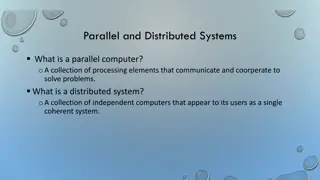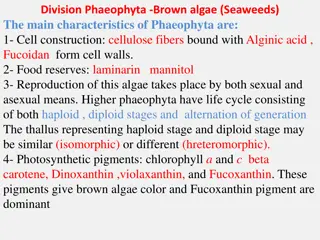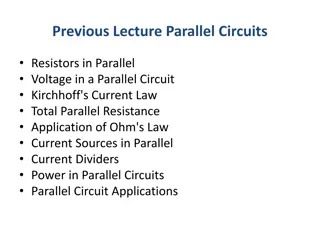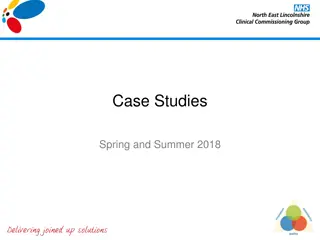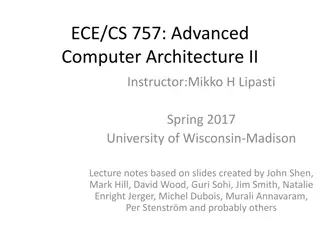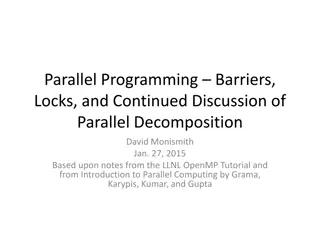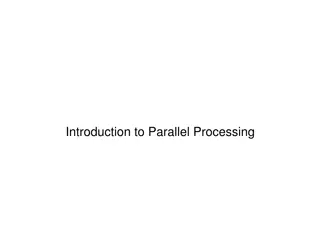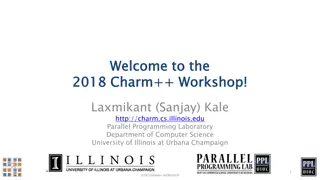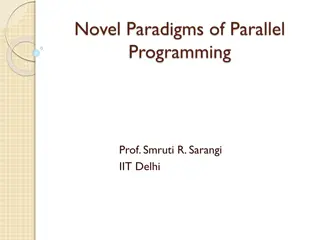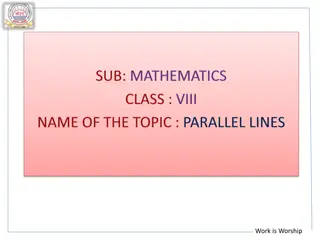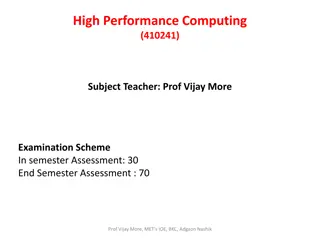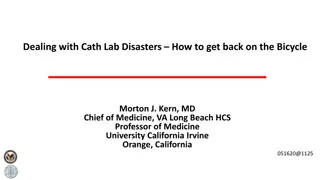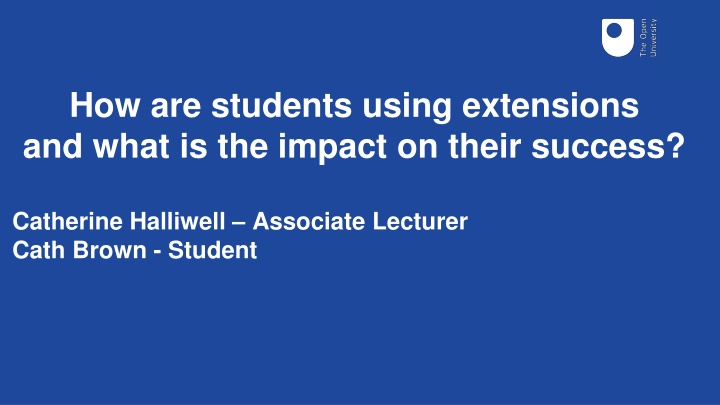
Impact of Student Extensions on Academic Success and Well-being
Explore how students utilize extensions, the effects on their success, and the reasons behind extension requests. The study delves into the relationship between high study intensity, extension use, and module success, aiming to identify pinch points in assessments and provide evidence-based support for students managing their workload effectively.
Download Presentation

Please find below an Image/Link to download the presentation.
The content on the website is provided AS IS for your information and personal use only. It may not be sold, licensed, or shared on other websites without obtaining consent from the author. If you encounter any issues during the download, it is possible that the publisher has removed the file from their server.
You are allowed to download the files provided on this website for personal or commercial use, subject to the condition that they are used lawfully. All files are the property of their respective owners.
The content on the website is provided AS IS for your information and personal use only. It may not be sold, licensed, or shared on other websites without obtaining consent from the author.
E N D
Presentation Transcript
How are students using extensions and what is the impact on their success? Catherine Halliwell Associate Lecturer Cath Brown - Student
WHY ARE WE DOING THIS? Anecdotally more extension requests from students Extensions can be a mixed blessing o may be vital for short-term success, confidence, retention o can lead to problems later compressing available time CAMPAIGN ASSETS More students studying at high intensity more clashing deadlines Why us? o Unique perspectives o Non-judgemental reporting experiences of peers eSTEeM themes: Supporting Students, Assessment University strategic priority: Student Success supporting full time & flexible study intensity
WHAT DO WE WANT TO FIND? 1. Do students studying at high intensity have more extensions? How does use of extensions relate to success on a CAMPAIGN ASSETS module? 3. How are students using extensions? 2.
HOW ARE WE DOING IT? 1 & 2: Quantitative (statistical) methods CAMPAIGN ASSETS 3: Student focus groups & AL focus groups 1. Do students studying at high intensity have more extensions? How does use of extensions relate to success on a module? How are students using extensions? 2. 3.
HOW COULD IT HELP? Identify assessment pinch points Revision of assessment strategies Support with workload management CAMPAIGN ASSETS Support with decision-making Evidence-based advice
WHAT ARE WE LOOKING AT? Level 2 Biology / Health Science o S294, S295, SXHL288, SK299, SDK228 o 30 credits each so many doing multiple modules o Workload a known issue for Health Sci CAMPAIGN ASSETS 17J, 18J data Only students on Nat Sci or Health Sci
AL FOCUS GROUPS How/ why do you think students are using extensions o Happening due to clashes o Students studying at high intensity balancing workload o Life getting in the way o Mental health a common reason CAMPAIGN ASSETS o Specific medical/ disability/ or mix o Not putting in the hours regularly o Some still don t complete whole TMA o No feeling of asking for extension to gain unfair advantage all sorts of reasons half of mine are probably to do with ill health, relationships or whatever, but ..there were a lot who just plain don t cope with the workload at second level and come in from level 1 doing 60 points and they think doing two 30 point courses at level 2 is going to be absolutely fine and then they are horrified if they are doing S294 and SK299
AL FOCUS GROUPS What sort of impact do you feel extensions have on student performance on the module overall o Beneficial to serious students o Allows them to complete to the best of their ability o Improves retention CAMPAIGN ASSETS o Serial extension students gets them through but long-term impact on study habits? more often there is a positive impact on the student to have extensions. It is far easier allowing students a bit of time to give them the ability to complete a piece of work to the best of their ability that they might not of managed otherwise. there are other students who might have frequent extensions and they might perform poorly overall on the module, but considering they are performing better than they would have done without the extensions ., I don t generally find a knock on impact
DATA AN OVERVIEW For 17J & 18J o 1654 students on Nat Sci or Health Sci studying these modules o 8779 assignments submitted by students who finished module, of which 1562 (17.8%) had an extension granted CAMPAIGN ASSETS
EXTENSIONS INCREASING? Proportions of TMAs on which an extension was granted Presentation Able bodied Disabled Total CAMPAIGN ASSETS n 18J 17J 14.44% 23.89% 16.45% 3434 925 4359 15.21% 29.88% 19.12% n 3242 1178 4420 Confidence interval for difference (-0.94%, 2.47%) (2.20%, 9.78%) (1.07%, 4.27%)
VARIATION BY MODULE Proportions of TMAs on which an extension was granted Able bodied 11.43% Disabled 22.02% Total S294 n S295 13.85% 3084 18.72% 2380 704 CAMPAIGN ASSETS n SDK228 n SK299 n SXHL288 n 14.09% 31.05% 660 248 908 17.26% 1350 16.57% 1545 19.58% 30.91% 20.54% 1777 20.14% 2080 22.22% 427 30.47% 535 29.70% 741 189 930
TRENDS ACROSS THE YEAR Proportions of TMAs on which an extension was granted Students with no disability Students with a disability 17J 18J
SUCCESS AND EXTENSIONS Correlations between score and extension length 17J (Only shown if p < 0.05) S294 17J S295 17J SK299 17J SDK228 17J SXHL 17J CAMPAIGN ASSETS Non-disabled -0.12-0.15 Disabled -0.38 TMA 01 TMA 01 TMA 02 TMA 03 TMA 04 TMA 01 TMA 02 TMA 03 TMA 02 TMA 03 TMA 01 TMA 02 TMA 03 TMA 01 TMA 02 TMA 03 -0.12 -0.13 S294 18J S295 18J SK299 18J SDK228 18J SXHL 18J TMA 01 TMA 01 TMA 02 TMA 03 TMA 04 TMA 01 TMA 02 TMA 03 TMA 02 TMA 03 TMA 01 TMA 02 TMA 03 TMA 01 TMA 02 TMA 03 Non-disabled Disabled -0.16-0.23 -0.24-0.26 -0.35-0.25-0.23-0.15 -0.27-0.19 -0.40 -0.28-0.31
SUMMARY & NEXT STEPS Summary o o A lot of data! Not straightforward/ clearcut Where there is a statistically significant correlation with attainment, it is small and negative Are we serving our disabled students well? CAMPAIGN ASSETS Next steps o Full AL focus group analysis using NVivo o Student focus groups o Relationships with study intensity & with module outcomes o Acknowledgements: eSTEeM, Data & Student Analytics, our project mentor, Rachel Hilliam


